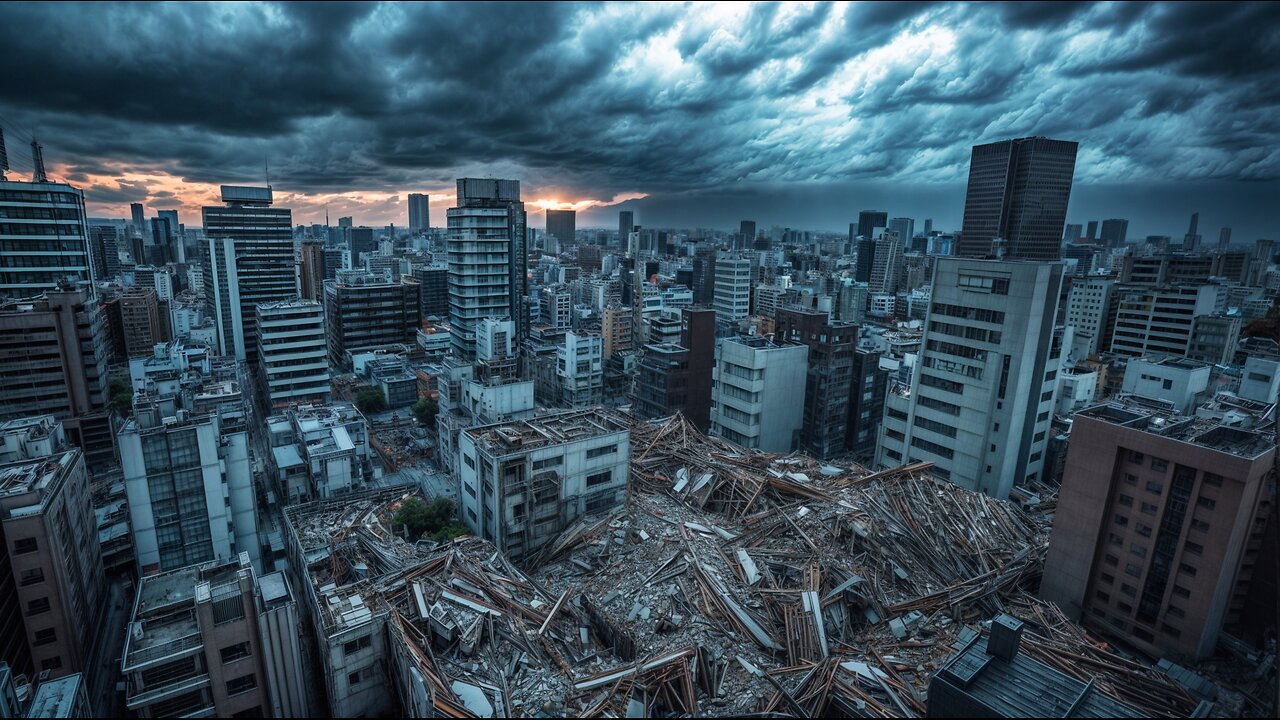Premium Only Content

Hurricane Debby’s Fury, Japan's Earthquake, Saudi Arabia's Floods: A Week of Disasters
Tropical Hurricane Debby
Tropical Storm Debby wreaked havoc along the U.S. East Coast, bringing torrential rains and dangerous flooding. The storm claimed the lives of at least six people. Debby made landfall on Florida’s Gulf Coast early Monday morning as a Category 1 hurricane, with maximum sustained winds of 80 mph. After weakening to a tropical storm, it moved slowly, pouring immense amounts of rain and flooding homes and roads. Record rains caused flash floods, with some areas potentially seeing up to 30 inches of rainfall. Around 500 people were evacuated from flooded homes in the beach town of Sarasota, Florida, one of the most affected areas on Monday.
Extreme Rains in Saudi Arabia
Devastating rains have once again struck Saudi Arabia, causing severe consequences. On August 3, 2024, one of the strongest floods in recent years occurred in the Jazan region. The water flooded roads and streets, leading to significant power outages. Many roads were closed, and authorities canceled in-person classes in schools to ensure the safety of students and staff. After 10 hours of continuous downpour in Jazan, a bridge connecting the provinces of Abu Arish and Sabya collapsed, resulting in one death and several injuries. Due to the bridge collapse, traffic was redirected to alternative routes.
Early Monday morning, Cedar Key, Florida, experienced flooding from a storm surge of up to 6 feet. By evening, up to a foot of rain had fallen in the Lake City area in north-central Florida, prompting a state of emergency.
Along the coast between Charleston, South Carolina, and Savannah, Georgia, almost a foot of rain fell in 24 hours. Debby also triggered tornadoes, which downed trees and damaged several homes on Kiawah and Edisto Islands. In Berkeley County, a twister destroyed several businesses and damaged many buildings, according to the emergency management director.
Hailstorm in Canada
On the afternoon of August 5, powerful thunderstorms hit southern Alberta, Canada. The weather conditions led to large destructive hail, strong wind gusts, and heavy rainfall. That evening, the storm struck Calgary, with the northern parts of the city bearing the brunt of the destruction. Numerous buildings were damaged, windows shattered, cars dented, and gardens completely destroyed. According to meteorologists, some hailstones that fell in Calgary were about 1.8 inches in diameter. Calgary International Airport was seriously affected. In a video recorded by a passenger, water could be seen streaming from the ceiling near a boarding gate, with chunks resembling tiles falling from above.
Strong Earthquake M7.1 in Japan
On Thursday, August 8, a powerful 7.1 magnitude earthquake struck off the coast of southern Japan. The epicenter was located in the waters off the eastern coast of Kyushu at a depth of about 18 miles. The earthquake most severely affected the city of Nichinan and its surrounding areas in Miyazaki Prefecture on Kyushu Island. The Japan Meteorological Agency reported that about half an hour after the earthquake, tsunami waves of up to 1.6 feet were recorded along parts of the southern coast of Kyushu and the nearby island of Shikoku. The Fire and Disaster Management Agency reported that nine people in Miyazaki and neighboring Kagoshima sustained minor injuries from falls and impacts with objects during the earthquake.
Several hours after the seismic event, the Japan Meteorological Agency issued its first-ever warning of an elevated risk of a megathrust earthquake. Seismologists held an emergency meeting to assess the earthquake’s impact on the Nankai Trough, a source of previous devastating earthquakes. As a result, they raised the probability assessment of future earthquakes from Kyushu to central Japan.
The world is experiencing an increasing number of climate disasters, which are becoming more destructive and abnormal. People are definitely noticing this and starting to wonder why it's happening. They share videos of these anomalies on social media and ask tough questions to authorities and scientists. However, these questions remain unanswered because neither politicians nor scientists currently have a ready solution to prevent the escalating climate crisis.
To avoid panic and dissatisfaction, information is being restricted. Social networks are being shut down, and scientists and media are being banned from commenting on recent natural disasters. We warned about this potential scenario years ago at the "Global Crisis" forums when the warning signs were already visible.
While there is still time and some opportunity left, it is crucial to make climate change the most discussed topic to unite scientists in the search for solutions. How quickly this information spreads depends on each person who hears it.
-
 1:04:06
1:04:06
AllatRa TV
7 days agoNuclear Reactor the Size of a Desktop Computer | Metatron N.R.G.
91 -
 43:10
43:10
The Mel K Show
13 hours agoMel K & Dr. Karlyn Borysenko | It's the Unions!?! Collectively Organizing the Fall of This Nation | 7-20-25
59.6K50 -
 3:00:28
3:00:28
IsaiahLCarter
1 day ago $1.79 earnedWedding Bells and Gnostic Spells || APOSTATE RADIO 024 (with Keri Smith)
28.2K3 -
 LIVE
LIVE
Spartan
10 hours agoSpartan - Pro Halo Player for OMiT | Scrims vs C9 then ranked
77 watching -
 2:16:19
2:16:19
vivafrei
14 hours agoEp. 273: Russia Hoax CONFIRMED! Will ARRESTS Follow? Trump SUES WSJ! Epstein Docs Release? & MORE!
110K132 -
 4:15:15
4:15:15
EricJohnPizzaArtist
6 days agoAwesome Sauce PIZZA ART LIVE Ep. #55: Wendy Wild!
29.2K1 -
 11:54
11:54
Tundra Tactical
6 hours ago $0.21 earnedIf You Laugh at These Gun Memes, the ATF Gets Your Dog – Tundy Meme Review
35.1K2 -
 LIVE
LIVE
Cewpins
3 hours agoSunday Sesh🍃weed💨420🔥!Giveaway !mj
109 watching -
 2:05:32
2:05:32
Nerdrotic
6 hours ago $0.31 earnedForbidden Inventions and Shadow Cover-ups | Forbidden Frontier #109
32.8K4 -
 LIVE
LIVE
JahBlessGames
2 hours ago🎉THPS w/ Cheap | Variety Ting | Music too??
21 watching